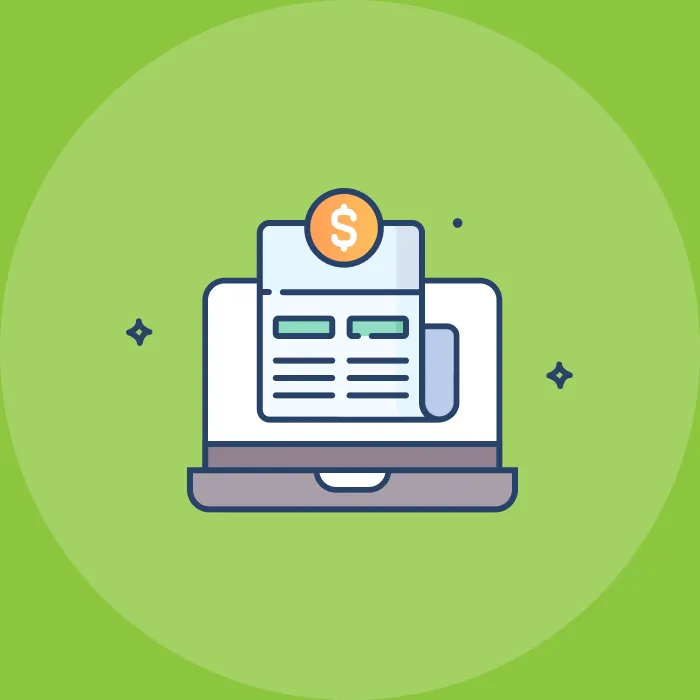With the eCommerce boom, more and more people are shopping online. Unfortunately, this means thousands of people are using their bank cards on websites worldwide, providing hackers with a golden opportunity to get hold of sensitive information.
If you're a small business with an online store, it may be time to tighten your payment processing security to ensure your customers' information isn't at risk. Compressing your deposit can also reduce the chance that you will get scammed.
Thirteen ways to make online payment more secure.
To get started, look at some tips in this blog and make it harder for cybercriminals to destroy what you've worked so hard to build.
1. Use a plugin
The WooComm payment gateway plugin not only makes payments quicker and easier but safer as well. This handy software means you won't have to route customers' card details through third-party websites. Instead, you'll be able to use WordPress and WooCommerce seamlessly together without involving payment processors that could potentially leave sensitive information at risk. Don't worry; customers will still be able to use all kinds of debit and credit cards to pay for their products.
2. Encrypt customer data
If you are storing customer data on your website and offering customers the option of saving their card details in their accounts, you will need to encrypt this information. Encryption means that even if hackers compromise your website, it will be virtually impossible for them to decode any customer or financial information.
Encryption software uses digital keys and mathematical algorithms to transform data into a complex code that can only be deciphered by someone with the specific key that unlocks the scrambled information.
3. Require two-factor authentication
To prevent cybercriminals from using stolen card data or hacking into customer accounts where payment details are stored, enable two-factor authentication.
Customers must enter a code sent to their mobile phone or approve transactions on their mobile banking apps. You'll have more confidence that the person paying for goods or services is who they say they are as they'll have access to the phone number connected to the card being used.
4. Use strong passwords
Some websites allow you to use just about any word for a password, but ideally, you should ask customers to use a strong password instead.
Strong passwords are combinations of letters and numbers in upper and lower cases and special characters. You may also want to prevent customers from using their name or birthday in their passwords, as these are easy to guess and may be more likely to be accessed by cybercriminals.
Some essential advice you should provide to customers when they're creating their strong passwords includes:
- Strong passwords should be of at least 15 characters in length
- Avoid substituting letters for numbers that look like the letters they're replacing. Example: P455w0rd.
- Don't use words from the dictionary; instead, use made-up words or random combinations of letters and numbers.
- Avoid sequential keyboard paths such as qwerty.
5. Ask for CVV numbers
Asking customers to enter their CVV number reduces the risk of cybercriminals being able to use stolen details on your website. This is because CVV numbers are usually only available on a physical card, so unless a customer's card has been stolen, it's likely to be a genuine purchase.
6. Invest in cyber liability insurance
While this step won't make payments more secure, it will protect you should something go wrong. Unfortunately, no online payment system is fool-proof, so even the most prominent companies still experience data breaches. However, cyber liability insurance can offer you protection when hackers manage to access your business's system or your customers' payment details.
Data breaches can be expensive, especially if you have to pay reparations to customers that had their data compromised. It may also cover any fines you are issued for data breaches. Penalties for failing to adhere to GDPR can be devastating, especially to small businesses. While most policies are unlikely to cover GDPR fines, many will cover other types of breaches.
7. Use an SSL certificate.
SSL certificates make your website and any transactions on it more secure and signal to consumers that you take security seriously. In addition, SSL certificates can be quickly and easily identified by visitors to your website by the little padlock in the corner of the search bar (it also means your web address will have HTTPS:// at the start of it).
SSL ensures that communications on your website are encrypted while SSL monitoring checks for certificate validity. However, you may also want to invest in extra security measures, as an SSL certificate is the bare minimum all websites should have these days.
8. Choose your website host carefully.
Choosing the cheapest host available when setting up a website for your small business can be tempting. After all, every host accomplishes the same thing, proper? In addition, some website hosts are better at keeping your data secure than others, but you may have to pay more to access these additional security features.
Some hosts may have different packages you can upgrade to if you're particularly security-conscious, so check if your current provider offers any deals to existing customers before moving on. Features to look out for include:
- Network monitoring
- Secure Socket Shell (SSH)
- DDOS prevention
- Malware protection
To assess hosts at a glance, check whether they are shared or dedicated hosts. Shared hosts mean your website will be on the same server as tens or hundreds of others, which opens you up to more risks. Dedicated hosts typically isolate your website and provide it with more attention and security. However, if your shared host provider monitors the network 24 hours a day and encrypts your data, they can still be a viable option.
9. Pay attention to PCI compliance rules.
If you don't accept payments yet on your website, you may not have encountered PCI compliance, but it's a vital part of making your website payment-ready. PCI regulations are set out by groups of the biggest payment providers, like Visa and American Express.
To ensure your payments are secure online, you must follow their 12 requirements. If you don't comply with PCI rules, these major card companies may not allow you to accept payments. However, PCI compliance typically includes basic security measures, so always try to go above and beyond to keep your customers and business safe.
10. Don't store payment details.
While it can be beneficial for customers to save their payment information to checkout more quickly when they return to your website, it poses a significant security risk. By storing credit card information or personal addresses, you're opening your business up to a more substantial breach than if you hadn't stored this data. If hackers manage to access the passwords of customers, then they'll be able to see much more than their shopping history if you've saved their payment information.
If you're worried about taking away this option from all your customers, allow security-conscious visitors to opt-out of saving their payment details. Then, instead of automatically saving details, ask customers whether they would like to keep their details and add a short disclaimer about the security risks so that they're fully informed about their decision.
11. Enable 3D security
You've probably come across 3D security when paying with a card online, as most banks now enable it on card transactions. Unfortunately, 3D security doesn't mean three-dimensional security. However, it stands for 3 Domain Server instead, meaning payments must go through three parties before approval.
3D security will redirect a customer's payment from your website to a secure page from their payment provider. They must input personal information or a code to approve a transaction. 3D security isn't necessary, and you must decide whether or not to allow it on your website. Nevertheless, it's an excellent addition, and while it does slow down the checkout process, most customers are now used to the 3D security box and will fill it out like second nature.
12. Monitor fraud
One of the best ways to keep payments secure is to prevent issues long before they happen. Monitoring fraud on your website will allow you to step in before any suspicious activity occurs, but it's not always easy to get started.
Rather than trying to monitor fraud manually, consider using fraud scanning software that will send you alerts when it detects anything that seems untoward. Then, when all the data is collected and analyzed for you, it will be much easier to spot patterns and act on potentially fraudulent activity.
Improve your payment processing today
There's a lot to consider when making payment processing secure, but no website needs every measure listed above. Instead, use a combination of tips listed in this blog that works for your needs and budget. Your customers will feel much safer shopping with you once you make this all-important commitment to safety.






